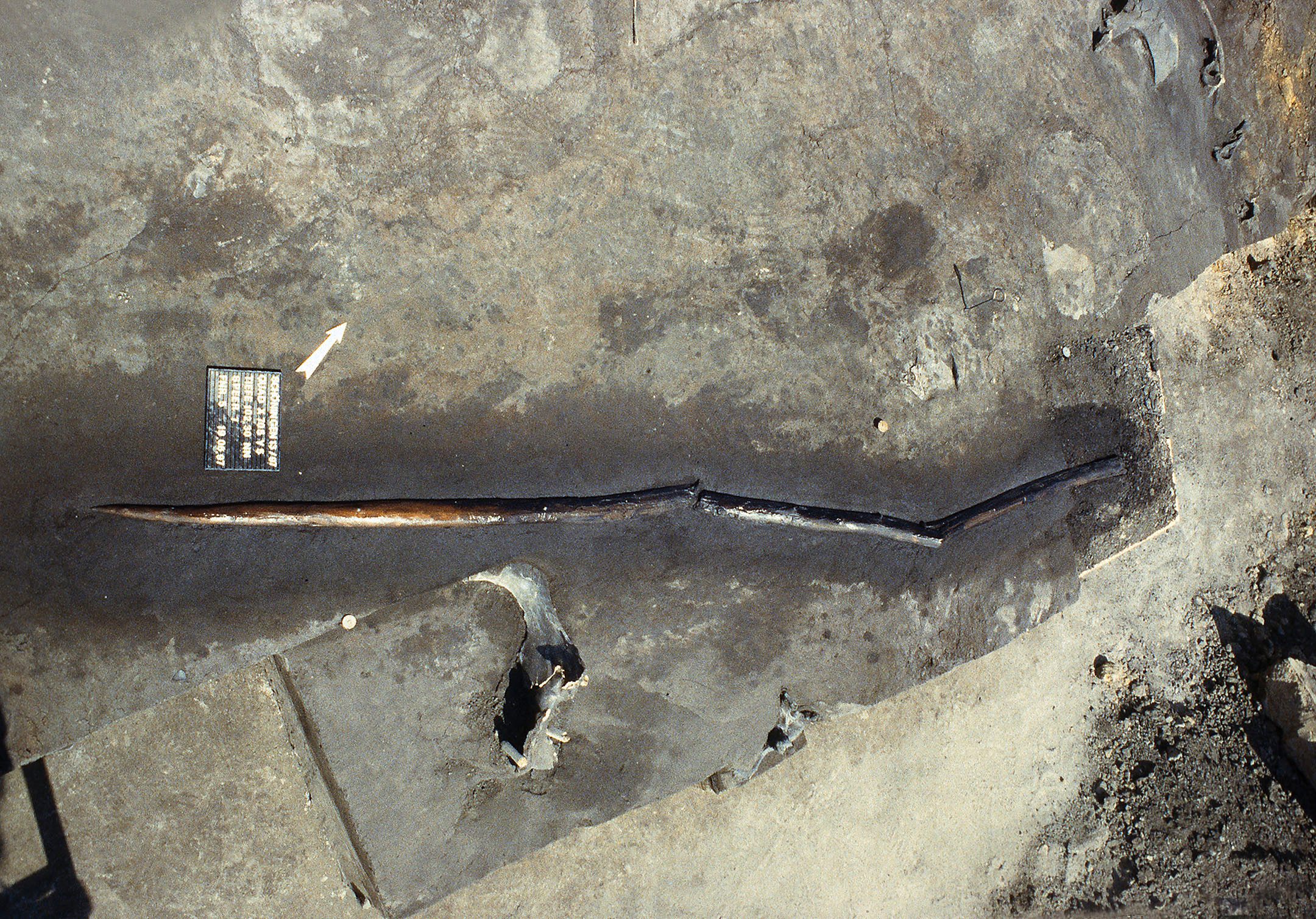Neanderthals Had Advanced Hunting Technology
Contrary to what popular opinion might assume.

Forty thousand years after disappearing, the Neanderthals have stayed alive largely as the butts of our jokes. You know how it goes: They’re unintelligent, lethargic, incompetent—an embarrassing chapter in our evolutionary history. Right?
Not really. Research published today in Scientific Reports provides yet another indication that our ancestors were far more advanced than we had thought—even when it comes to violence, a realm in which humankind can claim some unequivocal, if unfortunate, authority.
Archaeologists from University College London (UCL) have demonstrated that the 300,000-year-old “Schöningen spears”—the oldest preserved hunting weapons ever found in Europe—could have been used to hunt prey from a distance, and not only at close range. When the spears were excavated between 1994 and 1999, in a lignite mine in Schöningen, Germany, they helped to “really push away” the perception that Neanderthals were scavengers instead of hunters, says Annemieke Milks, the lead author of the new study. Still, Milks noticed while conducting her graduate research that there was a lack of data on hand-thrown spears from the period. Researchers like her “needed to understand basic things about how” these weapons functioned. So she set out to do exactly that with the Schöningen spears.


Using wood from Norwegian spruce trees grown in Kent, England, UCL Institute of Archaeology alum Owen O’Donnell built replicas of the spears by hand, weighing 760 and 800 grams, respectively. To ensure that the spears not only matched the historical specifications, but that they would also be handled with the proper technique, the team enlisted six javelin athletes to throw the spears at a hunter’s high velocity. The javelin throwers were able to hit targets up to 20 meters away, and with enough force to kill the would-be prey. Before the experiment, scientists had estimated that the spears could only be thrown half as far. They’re relatively hefty, after all—NFL footballs, by comparison, weigh around 400 grams.
The findings reveal the Neanderthals’ technological sophistication, and a major—if rather macabre—way in which they influenced human civilization. “Understanding when we first developed the capabilities to kill at distance,” said co-author Matt Pope in a press release, “is… a dark but important moment in our story.” Yet these capabilities represent just one piece of the rather complex Neanderthal puzzle. Between the last 10 and 15 years, says Milks, researchers have had to radically rethink the Neanderthals after evidence emerged that they explored underground, created art, thought symbolically, and made other advanced stone tools. But maybe it shouldn’t have been so surprising: The Neanderthals roamed for over 300,000 years. “Understanding them as a human-like species,” says Milks, “helps us understand their longevity.”
Going forward, Milks hopes that this study can lay a foundation for comparing early spears to later projectiles, and that a larger sample size of throwers can illustrate the importance of variables like skill and body size in handling them. Until then, let’s give the Neanderthals a break already.











Follow us on Twitter to get the latest on the world's hidden wonders.
Like us on Facebook to get the latest on the world's hidden wonders.
Follow us on Twitter Like us on Facebook